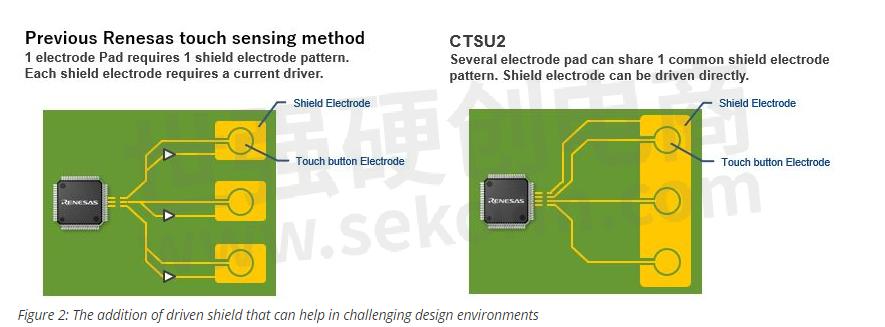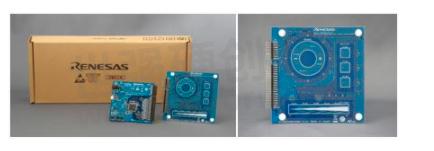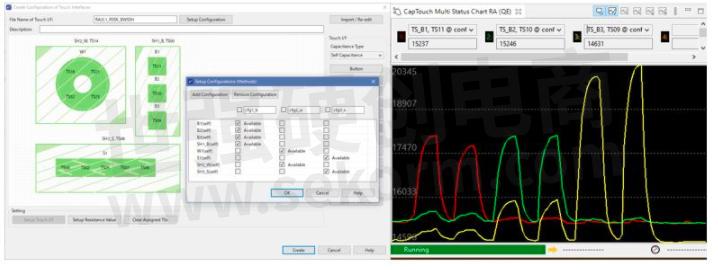New RA2L1 MCU group with Enhanced Capacitive Touch for Advanced HMI

Applications for capacitive touch interfaces have grown rapidly in recent years. Previously used mainly in Smart phones and high-end digital consumer products requiring a high functionality and aesthetically appealing design, the use of touch interfaces has expanded over the past few years to include home appliances known as well as industrial automation and hygienic healthcare-related products. The advantages of capacitive touch interfaces, such as operability, durability and resistance to dust and moisture, make them attractive for use both in household and industrial equipment, and they are expected to achieve adoption in all types of devices moving forward.
Renesas has been involved in capacitive touch for many years. In this time there have been continual improvements to the performance and capability of the touch sensing unit used within Renesas MCUs. Now, we have introduced new RA2L1 group of low-energy, general purpose MCUs, which include a 48MHz Arm Cortex M23 CPU with new generation Renesas Capacitive touch Sensing Unit (CTSU2) provides enhanced touch operability under a variety of conditions.
A key feature of CTSU2 is the improvement in noise immunity through the implementation of multiple sensor drive frequencies per touch channel. Previous generation Renesas touch sensing method utilized a single sensor drive frequency. In cases where noise synchronized with this drive frequency, sometimes significant issues in sensing (loss of sensitivity, spurious touches) were caused. In the CTSU2 for each touch channel, a center frequency then lower and upper sensor drive frequencies are implemented. In this implementation, each of the frequency results are evaluated with the worst performance of the three discarded. The remaining two results are summed and used to produce a determination of touch ON/OFF judgement.

Figure 1: Scanning at multiple frequencies enables the MCU to reject synchronous noise
Another new feature is the addition of driven shield that can help in challenging design environments. A shield electrode is used to help reduce parasitic capacitance around a touch sensor electrode. It can also help reduce environmental factors that may cause unwanted touch events. The technique requires that a second conductor, the shield electrode, be driven with a voltage equal to that being driven on the touch sensor electrode itself during measurement. This ensures no potential difference between the shield electrode and touch sensor electrode. Using this method, electrode pads can be shielded from noise impinging from either side, and from below.

Figure 2: The addition of driven shield that can help in challenging design environments
We have developed Capacitive touch evaluation system on the RA2L1, which is equipped with a 100-pin device. The kit includes a touch board (includes keys, wheel and slider interfaces) with shield electrodes.

Figure 3: RA2L1 Group Capacitive touch evaluation system
We also offer a tool called the QE for Capacitive Touch which is designed to help engineers quickly evaluate and tune hardware and software for optimum touch performance. QE for Capacitive Touch is simple to operate, yet very powerful and intuitive. Within this tool, there are various utilities available. Parameters such as reference values, thresholds and drift compensation can be modified on the fly through the Parameter Setting utility to tune each channel in real time. The measurement at each touch channel can be monitored graphically via this evaluation tool.

Figure 4: QE for Capacitive Touch parameter setting window
- 【Datasheet】RA2L1 Group Microcontrollers Datasheet
- 【Datasheet】RA2L1 Group Renesas Microcontrollers Datasheet
- +1 Like
- Add to Favorites
Recommend
- Ultra-Low Power RA2L1 MCU Group with An Operating Current of 64 μA/MHz and Advanced Capacitive Touch Sensing
- Renesas DSP Solution on Renesas Lab on the Cloud, Input Analog Signals Directly From A Signal Generator To The Rx231 Microcontroller Evaluation Board
- Renesas‘ Semiconductor Manufacturing Factory (Naka Factory) Fire: Production Capacity Has Recovered to 88%
- Renesas to Bolster Low-Power WAN Product Line with NB-IoT-Capable Wireless Module
- Renesas Announces 10 New Winning Combinations Integrating Celeno and Renesas Products
- Renesas & Altran to Deploy First Social Distancing Wristwatch Using Ultra-Wideband Chipset with Low Rate Pulse
- Renesas and FAW Establish Joint Laboratory to Accelerate Development of Next-Generation Smart Vehicles
- Silicon Labs Expands MCU Platform with a 50MHz Core Frequency New BB5 8-bit MCU Family
This document is provided by Sekorm Platform for VIP exclusive service. The copyright is owned by Sekorm. Without authorization, any medias, websites or individual are not allowed to reprint. When authorizing the reprint, the link of www.sekorm.com must be indicated.






























































































































































































































































































































































































































































































































































































































































































































































































































































































